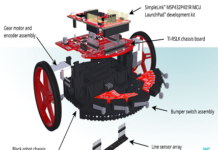
So, you want to build a drone? Awesome! The following tutorial is going to guide you through every step of the process. Let me warn you: it’s pretty long (5,000+ words), so you may want to bookmark this page. Why did I make this guide so long? Basically, a lot goes into building a drone, so I want to make sure I leave nothing out. From understanding basic UAV/drone terminology, to assembling the different parts of an RC quadcopter, you’re going to learn all the steps, from A-Z, on how to build a drone. With that being said, sit back, pull out a pen and paper (for taking notes), and let’s get started.
HOW TO BUILD A DRONE – PART 1: UNDERSTANDING BASIC DRONE TERMINOLOGY
Before you can even think about building your own custom quadcopter, there’s a lot of basic terminology that you need to learn first. It may sound like a hassle, but be rest assured that you’ll be thanking me later on in the guide when a bunch of new lingo starts to show up. For your convenience, I’ve divided up all the terms you need to know by category:
BASIC
- Drone: Synonymous with the term “quadcopter” or “UAV”. The term “drone” is generally reserved for unmanned aerial vehicles designed for military use.
- DIY: Stands for “Do-It-Yourself”, which in this case, means building a custom quadcopter by using different parts that may or may not have been originally designed for one another.
- UAV: Stands for “unmanned aerial vehicle” (of any kind).
MECHANICS
- Size: Usually provided in millimeters (e.g. 350mm), “size” represents the greatest point-to-point distance between two motors on a drone. Size can also help determine a drone’s “class” (mini, micro, etc.).
- CG: Stands for “Center of Gravity”, which is the point on the drone where weight is equally distributed on all sides (VERY important when learning how to build a drone).
- Dampener: Dampeners are small molded pieces of rubber used to minimize vibration throughout an RC drone.
- Frame: A drone’s frame is synonymous with a human being’s skeleton – it helps bring together important components, as well as provide protection.
- Landing Gear: For an RC drone to land without damaging fragile hardware, it must have landing gear. Unlike airplanes, which have wheels on their landing gear, RC drones utilizes plastic, metal, or rubber materials to help cushion landings.
- LED: To help orientate you to an RC drone’s location at night, it needs to have “Light Emitting Diodes”, or LEDs, on it.
- Prop Guards: Prop guards help protect your drone’s propellers from coming into contact with the external environment. They are also there to protect the operator (you).
- Shell: A drone’s “shell” is its outermost cover. Made from a variety of materials, it’s designed for aesthetic purposes (style) as well as functional purposes (proving protection from the elements). Depending on the shell’s shape, it can help the drone become more aerodynamic.
SENSORS
- Accelerometer: This sensor is designed to measure liner acceleration.
- Barometer: This sensor is designed to let the drone know how high above the ground it is. It does this by measuring pressure. Since air pressure changes with altitude, the drone can determine its own height with the help of a barometer.
- Gyroscope: A gyroscope is designed to measure angular acceleration on an x, y, or z axis. Basically, it’s responsible for allowing the drone to fly in a stable manner.
- GPS: Also known as a “Global Positioning System”, a GPS sensor allows satellites to pick up on a drone’s location so that the flyer (you) can do things like set specific coordinates for your drone to fly to, or even bring the drone back to its original staring location despite it not being in your field of sight.
TYPES
- RTF: Stands for “Ready-to-Fly”. It describes any RC quadcopter that comes with fully assembled with all of the parts and accessories required for flight.
- BNF: Stands for “Bind-and-Fly”. It describes any RC quadcopter that comes fully assembled WITHOUT a transmitter (you’ll need to choose a compatible transmitter to “bind” to the receiver on your drone).
- ATF: Stands for “Almost-Ready-to-Fly”. These drones don’t come fully assembled, and will require additional parts/accessories before they can be flown.
- Hexacoter: A UAV that has six motors/propellers.
- Multirotor: This term can be used to describe any aircraft that has multiple rotors.
- Octocopter: A UAV that has eight motors/propellers.
- Quadcopter: A UAV that has four motors/propellers.
- Tricopter: A UAV that has three motors/propellers.
PROPULSION
- ESC: Stands for “Electronic Speed Controller”, which is something that connects to the flight controller, motor, and battery, and helps mediate the speed by which the motors are rotating (you’ll learn a lot about these later on).
- Li-Po: Stands for “Lithium Polymer”, which is pretty much the universal battery type used to power RC drones. The reason why is because they’re lightweight (they won’t weigh the drone down) and are capable of releasing a lot of current.
- Motor: The motor is the part of the drone that rotates the propellers. Larger UAVs typically use “brushless” motors while smaller UAVs typically use “brushed” motors (you’ll learn about the differences between the two later on).
- PCB: Stands for “Printed Circuit Board”. This is a flat fiberglass part that has many different components soldered to it.
- Power Distribution: In order to power the different parts of an RC quadcopter, batter power must be shared, or “split”, to all those different devices. This is done with the help of a power distribution board. It takes the single negative and positive terminal from the drone’s battery and provides numerous other terminals (or connection points) throughout the drone so that other devices can receive power.
- Prop Adaptor: A prop adapter is the thin used to connect the drone’s motor to the propellers.
VIDEO
- FPV: Stands for “First Person View”. This is when you’re able to see a live video feed of what you’re drone’s camera is seeing while it’s recording.
- LCD: Stands for “Liquid Crystal Display”. It’s a type of screen used to display an image that’s coming in from a receiver.
- Gimbal: A gimbal is something that holds a camera during a flight, and allows it to deliver stable footage.
- GoPro: This is a popular sports/action camera that can be attached to RC drones with the proper mounts.


















